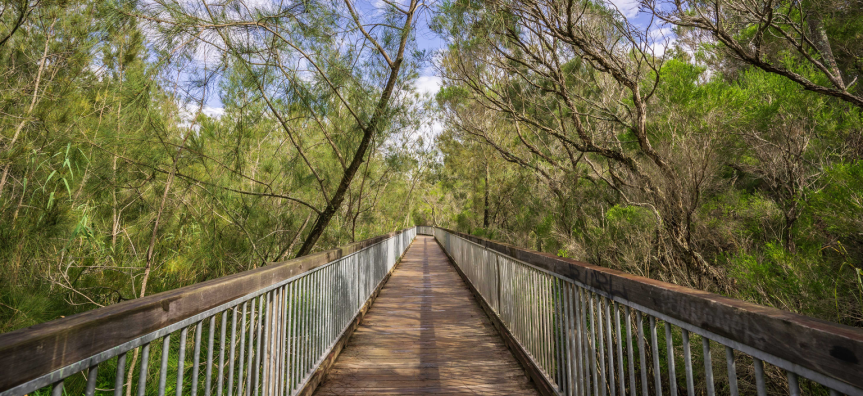
Environment
Ecosystem services – Nature’s gifts
The term ‘ecosystem services’, refers to the many and varied benefits to humans provided by the natural environment and from healthy ecosystems. Wetlands offer a range of ecosystem services including:
- a buffer for the surrounding areas from flood damage. Wetlands soak up rain runoff, reducing the frequency and intensity of flooding
- acting like giant filters, helping trap sediments and other forms of pollution from flowing downstream
- providing a biologically-productive system including photosynthesis, and nutrient recycling of organic and inorganic material used by plants and animals.
Consequently, it’s essential that we learn to protect these ecosystems and cherish the services they provide.
History
An ever-changing environment
Warriewood Wetlands is a highly modified ecosystem that is vastly different from its original natural state. Little is known about the condition of the wetlands at the time of European settlement, however it is thought that it was more extensive.
From the mid-1800s to the 1960s, agricultural activities including grazing and market gardening led to significant alterations in water quality and vegetation. During this time the water levels in the wetlands were heavily influenced by Narrabeen Lagoon.
In the late 1970's, the NSW Government agreed to let developers build a shopping centre on part of the site on the condition that the then Warringah Council would purchase the remainder of the site to retain as a natural area.
The Warriewood Wetlands was purchased by Pittwater Council in 1996. Since this time the wetlands have been transformed from a weed-infested swamp to the beautiful and functional wetland you see today.
Fauna
Nocturnal wonderland
Many of the wetlands inhabitants are nocturnal. This interesting behaviour is believed to have evolved in animals trying to escape predation by a cold-blooded and diurnal group of reptiles, the dinosaurs. It’s far easier to avoid detection at night.
The darkness helps both predators and prey move around a bit more stealthily. Predators have therefore developed special adaptations to help them locate their prey at night.
In warmer climates, water conservation is an important aspect of survival. Avoiding the heat of the day and moving around when it’s cooler is a clever way to minimise heat stress and loss of water. There’s also far less competition at night, so nocturnal species experience less conflict over food resources.
